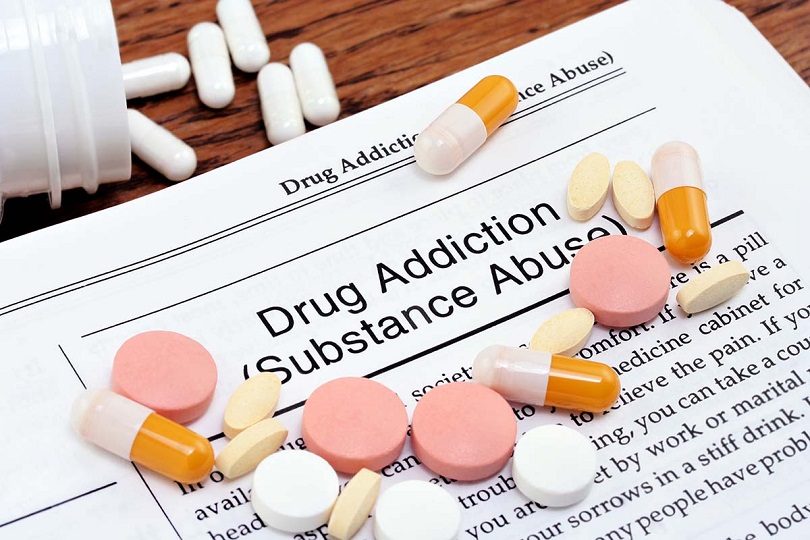Shift in Kashmir’s Addiction Landscape: Rise in Pharmaceutical Drug Abuse Among Former Heroin Users
By: Javid Amin
Shabir Ahmed (name changed), a 27-year-old resident of Budgam, was once a heroin addict. The high cost and scarcity of heroin led him to switch to Tramadol, which he found easier to obtain. Initially prescribed for pain relief, Ahmed began abusing the drug, leading to severe addiction. His family noticed a drastic change in his behavior and sought help from ATF Budgam. With counseling and medical support, Ahmed is now in recovery. Like Ahmed, many youngsters in Kashmir now use pharmaceutical drugs.
Healthcare professionals in Kashmir are increasingly concerned as a shift from heroin to pharmaceutical drugs like Tapentadol and Tramadol is leading to a surge in addiction cases. These prescription opioid pain relievers have gained popularity due to their accessibility and lower cost compared to heroin, contributing to a significant public health issue.
Dr. Majid Shafi, Nodal Officer for Mental Health & Addiction Treatment at the Directorate of Health Services Kashmir (DHSK), told Greater Kashmir that 5,282 drug addiction cases have been recorded across five Addiction Treatment Facilities (ATFs) in Kashmir, most now using pharmaceutical drugs.
As per the official statistics, 719 drug addiction cases were reported at ATF Bandipora, 937 in ATF Budgam, 1,951 in ATF Kulgam, 1,105 in ATF Pulwama, and 570 in ATF Shopian. “Most of the cases were heroin users. But now, they are consuming pharmaceutical drugs. Tramadol is a painkiller. It is a good drug, and doctors prescribe it for their patients. But it is being misused,” Shafi said.
He said this newfound appeal has led to a surge in addiction cases, exacerbating mental health issues, and straining already burdened healthcare systems.
According to a 10-district addiction survey, Kashmir has approximately 70,000 substance users, with 52,000 individuals using intravenous (IV) heroin. Healthcare professionals are urging serious measures to curb the escalating drug abuse problem. They said there is a need to focus on mental health support for youngsters in the valley to combat the root causes of substance abuse.
Dr. Majid said that 80 percent of addiction cases involve IV drug users, with 40 percent of these individuals infected with Hepatitis C. “The prevalence of Hepatitis C was already a concern in Kashmir, and it is spreading rapidly among heroin drug abusers,” he said.
Understanding the Shift from Heroin to Pharmaceutical Drugs
The shift from heroin to pharmaceutical drugs like Tramadol and Tapentadol in Kashmir is a complex phenomenon influenced by several factors:
Accessibility and Cost Pharmaceutical drugs are more readily available and cheaper than heroin. The high cost of heroin, coupled with its scarcity, has driven addicts to seek alternatives. Tramadol and Tapentadol, being prescription drugs, are easier to obtain from pharmacies or even through illegal channels.
Perceived Safety There is a misconception among users that pharmaceutical drugs are safer than illicit drugs like heroin. Since these drugs are prescribed by doctors, many believe they carry fewer risks. However, when abused, these drugs can be just as dangerous and addictive as heroin.
Lack of Awareness Many users are unaware of the potential for addiction with prescription opioids. The lack of education about the dangers of these drugs contributes to their misuse. There is a need for widespread awareness campaigns to inform the public about the risks associated with pharmaceutical drug abuse.
The Role of Healthcare Professionals
Healthcare professionals in Kashmir are on the front lines of this growing epidemic. They are witnessing firsthand the devastating effects of pharmaceutical drug abuse and are calling for urgent action:
Increased Surveillance and Regulation There is a need for stricter regulation and monitoring of prescription drugs. Pharmacies should be required to maintain detailed records of opioid prescriptions and report any suspicious activity to the authorities. This can help prevent the diversion of these drugs into the hands of addicts.
Comprehensive Addiction Treatment Addiction treatment facilities need to be equipped with the necessary resources to handle the increasing number of patients. This includes providing medical treatment for withdrawal symptoms, counseling services, and support groups for recovering addicts. There is also a need for specialized programs tailored to the unique challenges faced by those addicted to pharmaceutical drugs.
Mental Health Support Addressing the root causes of addiction requires a focus on mental health. Many addicts turn to drugs as a way to cope with underlying mental health issues such as depression, anxiety, and trauma. Providing mental health support and counseling can help prevent drug abuse and aid in the recovery process.
Community Involvement
Community involvement is crucial in combating the drug abuse problem in Kashmir. Families, schools, and community organizations can play a significant role in prevention and recovery efforts:
Family Support Families need to be educated about the signs of drug abuse and the importance of early intervention. Family support can make a significant difference in the recovery process. Encouraging open communication and providing emotional support can help addicts feel less isolated and more motivated to seek help.
School Programs Schools can implement drug education programs to raise awareness among students about the dangers of drug abuse. These programs should focus on teaching students about the risks associated with pharmaceutical drugs and providing them with coping mechanisms for dealing with peer pressure and stress.
Community Outreach Community organizations can organize awareness campaigns, workshops, and support groups to educate the public and provide assistance to those struggling with addiction. Collaborating with healthcare professionals and law enforcement agencies can help create a comprehensive approach to tackling the drug abuse problem.
Government Action
The government has a critical role to play in addressing the drug abuse epidemic in Kashmir. This involves implementing policies and initiatives aimed at prevention, treatment, and enforcement:
Policy Implementation The government should implement policies that regulate the distribution and sale of prescription opioids. This includes setting up a centralized database to track prescriptions and prevent doctor shopping.
Funding for Treatment Facilities Adequate funding should be allocated to addiction treatment facilities to ensure they have the resources needed to provide comprehensive care. This includes hiring trained staff, purchasing medical equipment, and providing support services for recovering addicts.
Law Enforcement Strengthening law enforcement efforts to crack down on the illegal distribution of prescription drugs is essential. This involves increasing surveillance, conducting raids on illegal pharmacies, and prosecuting those involved in the illegal drug trade.
Bottom-Line
The shift from heroin to pharmaceutical drugs among addicts in Kashmir is a growing concern that requires immediate attention. By understanding the factors contributing to this trend and taking comprehensive action, it is possible to curb the rising tide of pharmaceutical drug abuse. This involves a collaborative effort between healthcare professionals, community organizations, families, and the government. Through increased regulation, education, and support, we can address the root causes of addiction and provide effective treatment for those affected.
Addressing the drug abuse problem in Kashmir is not just about treating addiction but also about preventing it. By focusing on mental health support, community involvement, and government action, we can create a safer and healthier environment for the people of Kashmir. It is essential to act now to prevent further escalation of the issue and to support those on the path to recovery.




